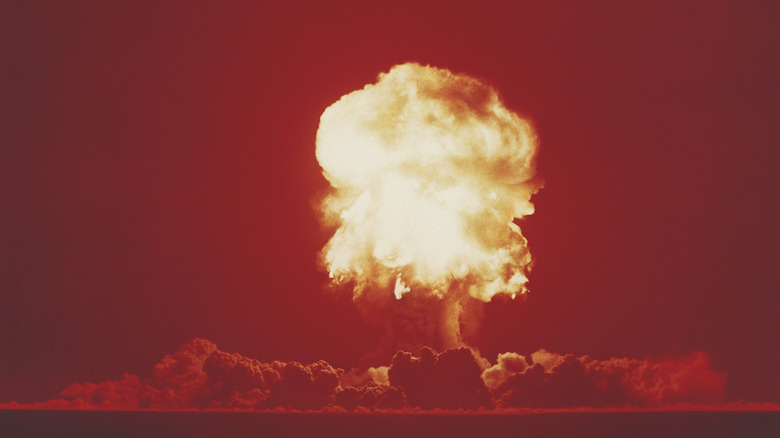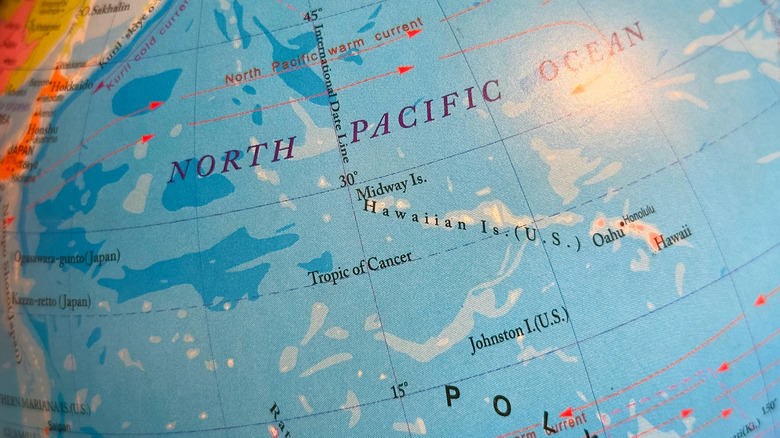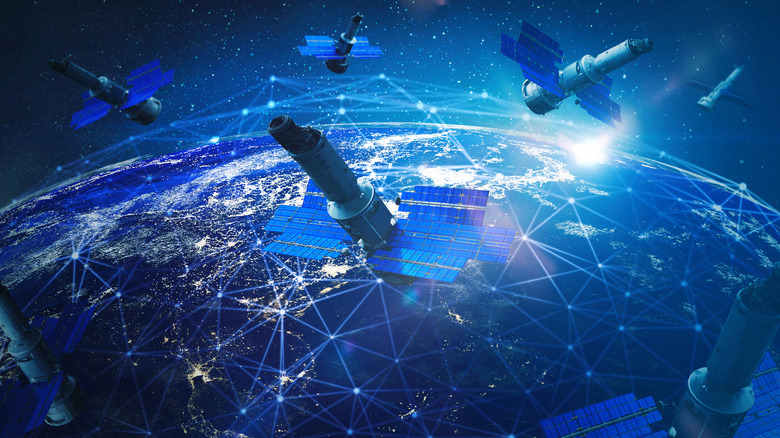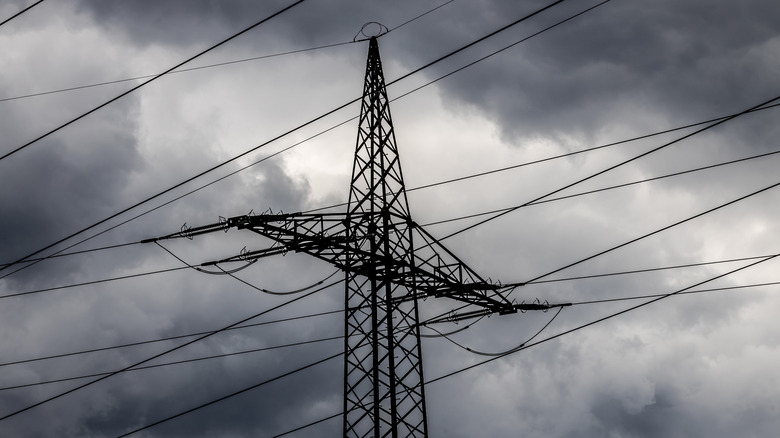What Would Happen If A Nuke Exploded In Space?
Eight decades have passed since the Trinity test launched the age of nuclear weaponry. In that time, the weapons themselves have grown more and more powerful, but we haven't made any meaningful progress when it comes to protecting ourselves against them. One idea keeps coming up, though; a space-based missile defense system.
The United States just revealed its own proposal for such a system, dubbed "the Golden Dome," which would involve building a network of satellites around the country to detect, track, and intercept ballistic missiles, including nuclear warheads. This proposal is really nothing new, though. Former President Ronald Reagan proposed a similar system called "Star Wars" back in the '80s. Plus, several countries have already set a precedent by putting ground-based missile interception systems in place, most notably Israel's Iron Dome. That system has proven highly effective against ordinary missile attacks, but no defense system has ever faced an intercontinental ballistic missile carrying the full fury of a hydrogen bomb.
The biggest difference between Israel's Iron Dome and the proposed Golden Dome is the theater of operations. Iron Dome is entirely ground based but Golden Dome would be combating munitions in outer space, which raises the question of what would happen if one of those nukes exploded above the atmosphere? We actually know the answer to this one because it's already happened a few times.
The time a nuke really did go off in space
We can make some strong assumptions about the potential future impact of nuclear weapons in space because the U.S. actually conducted five space-based detonation tests, the largest and most famous of which was Starfish Prime. On July 9, 1962, the U.S. detonated a 1.4-megaton thermonuclear bomb 250 miles above Earth's surface, which is the same altitude at which the International Space Station now orbits.
The test was conducted over Johnston Atoll, a group of tiny, uninhabited islands in the central Pacific Ocean. The remote locations used for nuclear testing are certainly not accurate comparisons for a potential explosion over an inhabited area, as would happen with a missile defense interception, even so, Starfish Prime had a much more serious impact than anyone had anticipated.
Johnston Atoll is located 825 miles away from Honolulu, and yet the explosion caused a number of streetlights in the city to black out. Radio signals were cut out as the sky lit up with all the fire of a second sun. After the blast, an artificial aurora could be seen as far off as New Zealand, as if the Northern Lights had suddenly manifested over the equator. In space, the impact was even more dramatic, with the bomb destroying a third of the satellites that were orbiting Earth at the time. The impact was so consequential that it helped to initiate the 1967 signing of the Outer Space Treaty, an international agreement to keep space free and peaceful.
Destroying satellites would plunge the world into chaos
Starfish Prime destroyed a third of the satellites orbiting Earth at the time, but that was 1962, and the total number of satellites around the world was only about two dozen. Today, that number has skyrocketed to about 11,700 active satellites orbiting the globe. A nuclear bomb in space would destroy thousands of these, not just from the blast itself, but also from the radiation left behind. Starfish Prime created a belt of radiation around Earth that lasted at least ten years, and satellites that passed through it quickly broke down from radiation exposure.
A mass outage of satellites would plunge the world into chaos. Travel would grind to a halt as GPS systems go out. Air traffic control centers would be shut down and traffic lights would go out of sync, risking deadly crashes. The systems used for time stamps on all electronic financial transactions from credit card purchases to stock exchanges would shut down. Electronic transactions would be impossible, forcing a reliance on cash, which would be hard to get because ATMs wouldn't work. The global economy would collapse, and supply chains for vital things like food and medicine would be lost.
Rebuilding satellite infrastructure after a nuclear blast in space would take an extremely long time because the residual radiation from the blast could destroy any new satellites we send up there. Human civilization would be set back by a matter of decades.
A nuclear blast in space would bombard Earth with electromagnetic pulse
A nuclear bomb going off in space would release a massive amount of gamma ray radiation. These gamma rays can blast electrons off of atoms in the atmosphere, scattering charged particles at the speed of light. This effect is known as a nuclear electromagnetic pulse, or EMP. The electrons in the atmosphere would create a beautiful aurora, like the one seen after the Starfish Prime test, but the consequences would be devastating. EMPs didn't just cause the Starfish Prime aurora; they are also the reason that Honolulu's street lights went out, and radio signals were lost in many locations around the Pacific.
If a nuclear warhead detonated in low-Earth orbit, it would send EMPs along a wide swath of the planet's electromagnetic field, which could shut down electricity for entire continents. If you thought the consequences of satellite destruction seemed bad, this would be exponentially worse. A complete loss of electricity wouldn't just take out the telecommunications and finance sectors, it would cause refrigerators to fail, leading to mass food shortages. Hospitals and medical equipment would lose power. Mass casualties would be inevitable.
There is simply no situation in which launching a nuclear weapon ends in anything but death and disaster. Once a missile is launched, it will explode, one way or another, one place or another. The only true defense is for world leaders to keep their trigger fingers in check.



